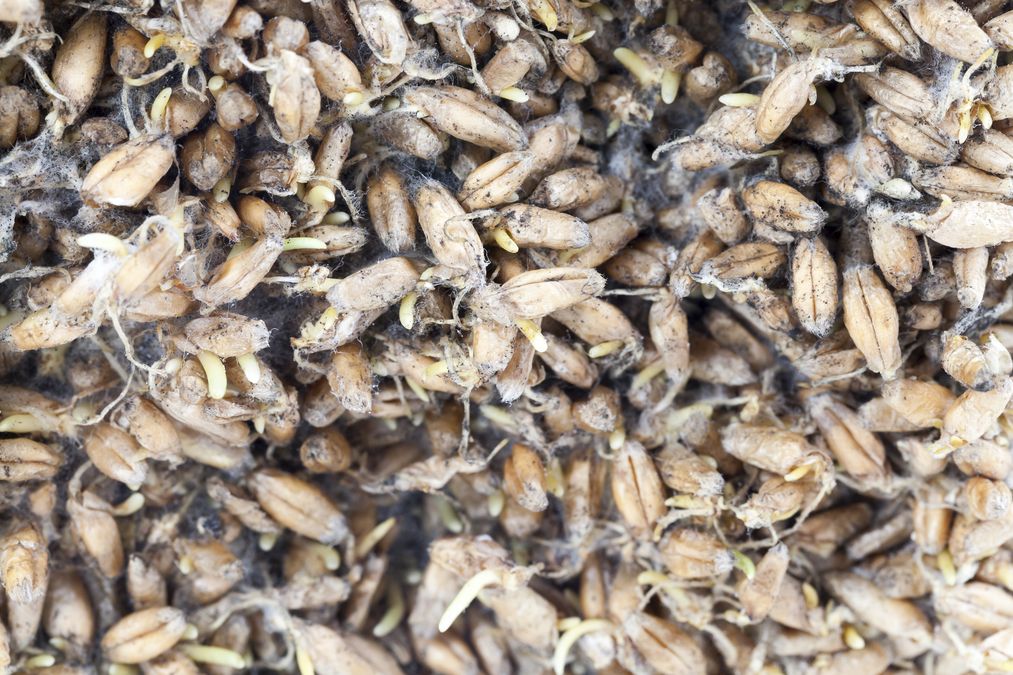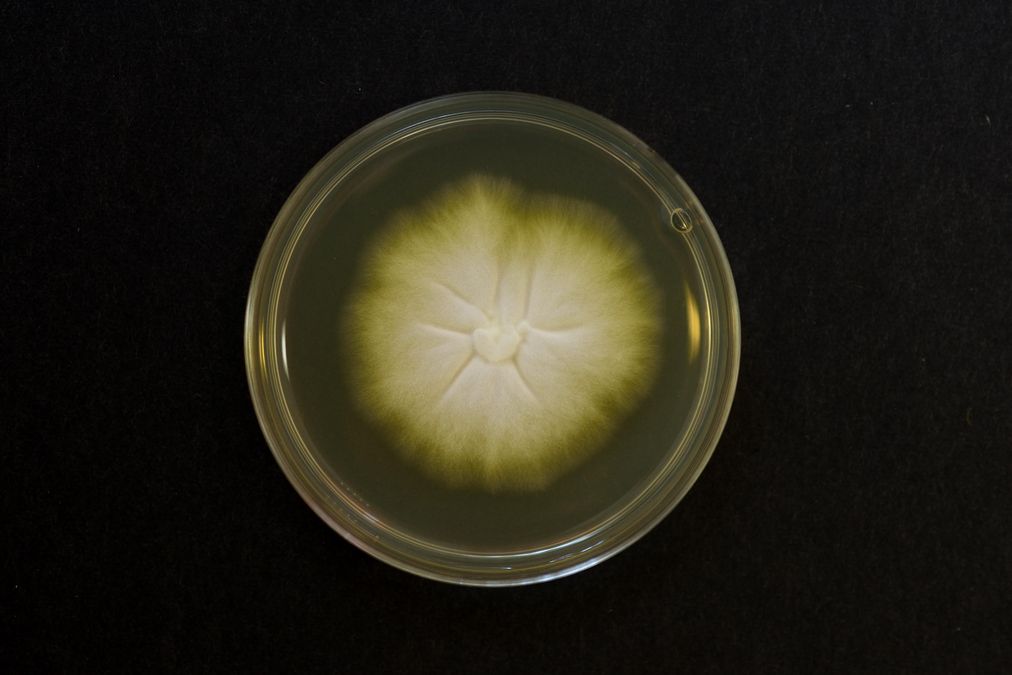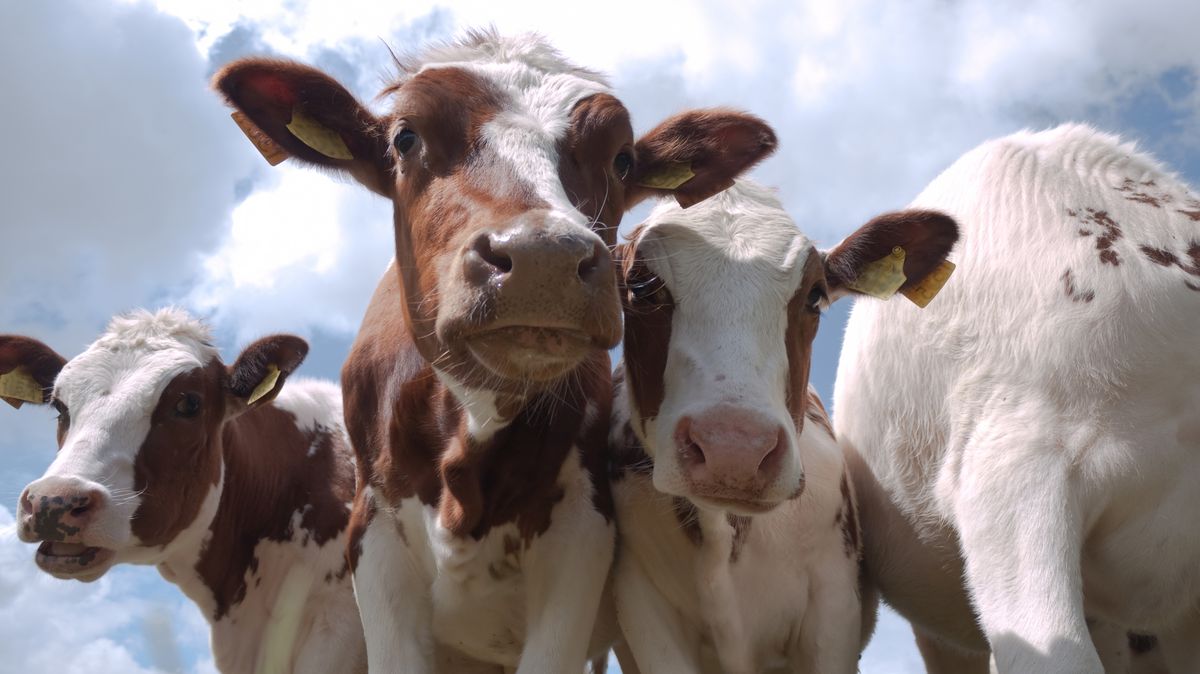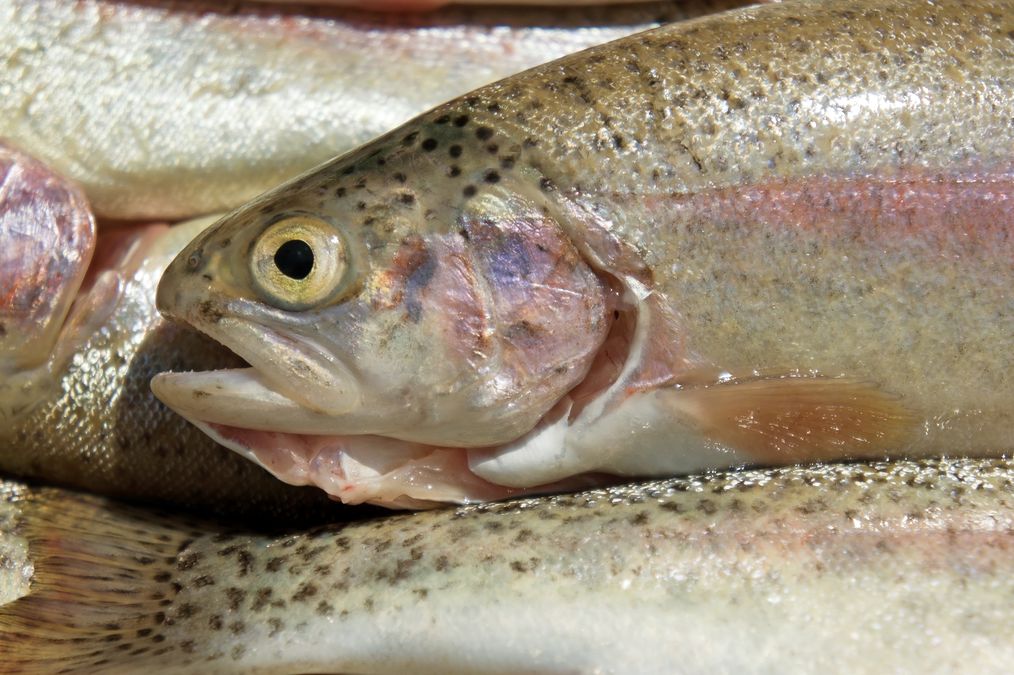The scientific focus of our mycological group leader Prof. Wieland Schrödl lies in the research of dermatophytoses, mycotoxins, calprotectin, Flavobacterium psychrophilum and bacteria in cooling lubricants. Prof. Wieland Schrödl has many years of experience in the differentiation of fungi. A MALDI-TOF device (Microflex Biotyper by Bruker) is available for the identification of fungi. In recent years, the database of MALDI-TOF mass spectra for numerous pathogenic fungi has been expanded.
RESEARCH PROJECTS MYCOLOGY
Project
Establishment and evaluation of an in vitro skin infection model for the zoophilic dermatophyte Trichophyton benhamiae and its further molecular biological characterization
Summary
Within the framework of a pilot project (national zoonosis platform), an in vitro skin-dermatophyte infection model (guinea pig skin) with coordinated detection methods for dermatophytes and their enzymes was established. The novel and significant dermatophyte Trichophyton benhamiae, which can cause infections in animals and humans - especially in children - was used for the investigations. After the tissue culture method was established, guinea pig skin implants were infected with various isolates of the skin fungus. The subsequent investigations - also in comparison to naturally diseased animals - provided information about the infection process, the virulence factors contributing to pathogenicity and the extent of skin damage. The fungal strains used and the samples obtained were archived in a biobank and can therefore be used for further molecular biological investigations. This model will be continuously applied and further developed in the future.
Project Manager
- apl. Prof. Wieland Schrödl
- Dr. Jule Michler, Institute of Anatomy, Histology and Embryology, Faculty of Veterinary Medicine, University Leipzig
Participating Associate
Alumni
- Theresa Bartosch
Publications
- Baumbach CM, Schrödl W, Nenoff P, Uhrlaß S, Mülling CKW, Michler JK. 2020. Modeling dermatophytosis: Guinea pig skin explants represent a highly suitable model to study Trichophyton benhamiae infections. J Dermatol. 47(1):8-16. doi: 10.1111/1346-8138.15150
- Bartosch T, Frank A, Günther C, Uhrlaß S, Heydel T, Nenoff P, Baums CG, Schrödl W. 2019. Trichophyton benhamiae and T. mentagrophytes target guinea pigs in a mixed small animal stock. Med Mycol Case Rep. 23:37-42. doi: 10.1016/j.mmcr.2018.11.005
Cooperation Partners
- Institute of Anatomy, Histology and Embryology, Faculty of Veterinary Medicine, University Leipzig
Founding
Bundesministerium für Bildung und Forschung (BMBF)
Project
Development of a screening method for the highly sensitive detection of gliotoxin in food and animal feed
Summary
Within the framework of a cooperative project, gliotoxin, a secondary metabolite of microfungi, will be investigated as a marker for food and feed contamination with mycotoxins. In this project, antibodies with or without detection markers against the mycotoxin gliotoxin will be designed and produced. The antibodies will be used for the development and establishment of highly sensitive and specific quantitative detection methods based on ELISA for routine analysis.
Project Manager
Prof. Wieland Schrödl
Participating Associate
Jakob Lindenhahn
Founding
Frankenförder Forschungsgesellschaft mbH
Project
Detection of dermatophytes in domestic and farm animals, especially of novel zoophilic dermatophytes with great clinical importance for human medicine
Objectives
- Optimisation of the cultural detection and the dermatophyte diagnostics
- Establishment of mass spectrometric identification of dermatophytes by MALDI-TOF MS and expansion of the dermatophyte database
Project Manager
Prof. Wieland Schrödl
Cooperation Partners
- Medical Faculty, University Leipzig
Project
Bovine calprotectin as an inflammatory marker and biomarker
Objectives
Development of a quantitative detection method for bovine calprotectin
Summary
Calprotectin is released after activation of neutrophil granulocytes. It is associated with damage-associated molecular patterns (DAMP) and has multiple functions. One component of the working program is the generation of monovalent antibody fractions for the development of an ELISA.
Project Manager
Prof. Wieland Schrödl
Cooperation Partners
- Institute of Pharmacology, Pharmacy and Toxicology, Faculty of Veterinary Medicine, University Leipzig
Founding
Bundesministerium für Wirtschaft und Energie (BMWi)
Project
On-site detection of the causative agent of cold-water disease of salmonids
Objectives
Development of a detection method for the on-site diagnosis of the causative agent of cold-water disease of salmonids (salmonidae)
Summary
As part of a third-party funded project, a bacterial strain bank with the associated MALDI-TOF mass spectra for fish and aquarium water associated bacterial genera and species was established. This database will be continuously expanded. In further studies, the further development of detection methods for the infectious agent Flavobacterium psychrophilum (cold water disease of fish) will be promoted. Important components of the work program include the generation of pathogen-specific antibodies and the differentiation of Flavobacterium psychrophilum isolates using the MALDI-TOF-MS technology.
Project Manager
Prof. Wieland Schrödl
Founding
Finished Research Projects
The results from completed projects provide an important basis for projects currently underway. Due to our active research activities we have been able to continuously expand our MALDI-TOF-MS database and thus improve the identification of fungi.
Project
Characterization of field and vaccine strains of Trichophyton verrucosum
Summary
Bovine trichophytosis (RT) is mainly caused by the dermatophyte Trichophyton (T.) verrucosum and, with a prevalence of approx. 30%, is a widespread infectious disease in German cattle herds. The disease is associated with skin lesions, reduction in milk yield and secondary bacterial infections. Furthermore, bovine trichophytosis is an important zoonosis. In this study, T. verrucosum strains of cattle and humans as well as vaccine strains are compared and characterized to gain a better understanding of epidemiology and to elucidate the mechanism of attenuation of vaccine strains.
Project Manager
Prof. Wieland Schrödl
Participating Associate
Theresa Bartosch
Publications
Bartosch T, Heydel T, Uhrlaß S, Nenoff P, Müller H, Baums CG, Schrödl W. MALDI-TOF MS analysis of bovine and zoonotic Trichophyton verrucosum isolates reveals a distinct peak and cluster formation of a subgroup with Trichophyton benhamiae. Med Mycol. 2018 Jul 1;56(5):602-609. doi: 10.1093/mmy/myx084
Cooperation Partners
- Medical Veterinary Clinic, Faculty of Veterinary Medicine, University Leipzig
Project
Systemic mycoses in reptiles
Summary
Within the scope of the study, the pathogens and clinical pictures of systemic mycoses in reptiles are characterised.
Project Manager
Dr. Volker Schmidt
Participating Associate
Prof. Wieland Schrödl
Cooperation Partners
- Department for birds and reptiles, Faculty of Veterinary Medicine, University Leipzig




